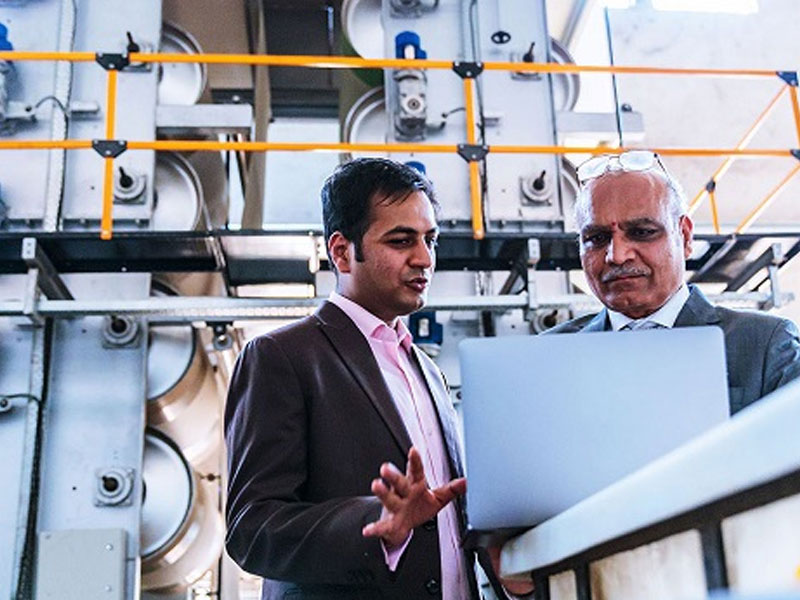In an industry that continually faces risks of commoditization, metal fabricators are turning to the Internet of things (IoT) as a way to provide value-add to customers and streamline processes. But will adding condition-tracking sensors to equipment be enough? Is IoT technology the cure-all for tight margins, escalating customer demands, volatile pricing, and aggressive competition? Well, that depends.
The Background in a SnapshotIoT has been generating buzz that spikes then ebbs, like the tides.
Grandiose projections for potential economic impact creates optimistic swells. Media pundits herald IoT technology as the key driver behind waves of digitalization. But, then, mixed feedback pops up. Some early adopters realize their tidal waves of data need to be aggregated and analyzed further in order to have practical applications. Data overload is a common issue to resolve.
As more and more projects move through proof-of-concept stages, it becomes clear that deploying an IoT plan is not as simple as flipping a switch. Often, several solutions are required in order to achieve the specific results desired. There is, though, one factor common to all successful initiatives: a foundational strategy and plan for data consumption must be in place to avoid data overload. Analytics with built-in Artificial Intelligence separates programs with marginal results from ones with game-changing, differentiating outcomes.
How do Metal Fabricators Avoid Common Mistakes?
When designing programs to leverage IoT technologies, metal fabricators should focus on applications which will bring measurable impact on the bottom line. Because of the industry’s ultra-thin margins, any tactic which helps control costs and boost productivity will be of value. Those incremental gains, though, may not be enough to be true attention-getters for customers. Fabricators wanting to differentiate their business from the onslaught of competitors will need to aim for bigger, better, more unique gains in order to impress the highly demanding B2B customer.
Here are Five Tips for Achieving Differentiation Through IoT:
Offer Servitization: If you are a fabricator of industrial components or equipment, offering a product as a service is one of the most dramatic ways to use IoT technology. Thanks to data generated from sensors, you can monitor customer inventory levels at their location, consumption rates of your products, project needed demand, and provide a continuous as-needed supply. This service will help your customers optimize their inventory levels while building a relationship of trust.
Productize Data: Data generated from sensors provides valuable insight about the way in which components are functioning in the field, how assets are performing, ways to improve field conditions, and lifecycle phases of fabricated parts and components. This data can be packaged and offered to customers. It can be a value-add service or a new revenue stream.
Engage Customers: IoT technology can be used to capture and share insights with customers. IoT connectivity and sensor-generated data up-levels the ability to collaborate on component design, test results, and co-monitor fabricated parts through test stages. Even though you may be miles or continents away from you customer, the ability to collect, aggregate, analyze and share condition-based data from anywhere, brings you closer to your customers– when and where they are making decisions.
Manage Volatility: IoT technology can help you monitor the location of delivery trucks, service fleets, shipments of raw materials, and inventory levels in your warehouse—or your customers. Fast changing stock conditions can be monitored in real-time, so timely decisions can be made about shifting inventory between warehouses or re-routing trucks as needed. This agility can be a marketable differentiator.
Extend Asset Lifecycle: Sensors embedded in shop floor assets can be used to collect data about the physical condition of assets, like temperature and vibration, monitoring for early warning signs of maintenance requirements. Staying proactive and maintaining high-value assets properly can enable companies to extend their lifecycle, eliminate unplanned down time, and improve productivity. This can ultimately improve the accuracy of capacity planning, on-time delivery to customers, and cashflow.
Getting started
Each of these differentiating tips requires advanced IoT software, including cloud computing, a Data Lake for aggregating and storing large volumes of data, and analytics for drawing consumable insights from the data. Solutions need to tightly integrate and adhere to modern security protocols. Working with a solution provider or deployment consultant will help you leverage the benefits of experience. As IoT technology is still relatively new, your internal IT teams will appreciate the help of professionals who are familiar with the complexities of IoT deployment. These experts can help you avoid common pitfalls and overcome any possible roadblocks that arise.
Ultimately, metal fabricators need differentiation and tools to help them level-up their products and service for customers. IoT technology can provide important abilities and help you leverage technology for insight. But, to truly be effective and reap differentiating-level benefits, metal fabricators need to go beyond the basics. Involve experts to help plan the strategy. Set goals using advanced applications, such as the five listed here, to stand out from the competition. Most importantly, get started now.
About Author:
 Ranga Pothula is the Managing Director and General Manager for Infor’s India Business Unit. At Infor, his responsibility is scaling IBU operations by sharpening focus on global delivery, servicing offerings, technology developments, and strengthening customer and partner relations. Ranga has been at Infor for over two decades. Having been at the helm of both R&D and CoE services across multiple products, under his charge, he has been leading the growing global delivery services operations in India, the Philippines, Egypt and Poland over the past four years.
Ranga Pothula is the Managing Director and General Manager for Infor’s India Business Unit. At Infor, his responsibility is scaling IBU operations by sharpening focus on global delivery, servicing offerings, technology developments, and strengthening customer and partner relations. Ranga has been at Infor for over two decades. Having been at the helm of both R&D and CoE services across multiple products, under his charge, he has been leading the growing global delivery services operations in India, the Philippines, Egypt and Poland over the past four years.


